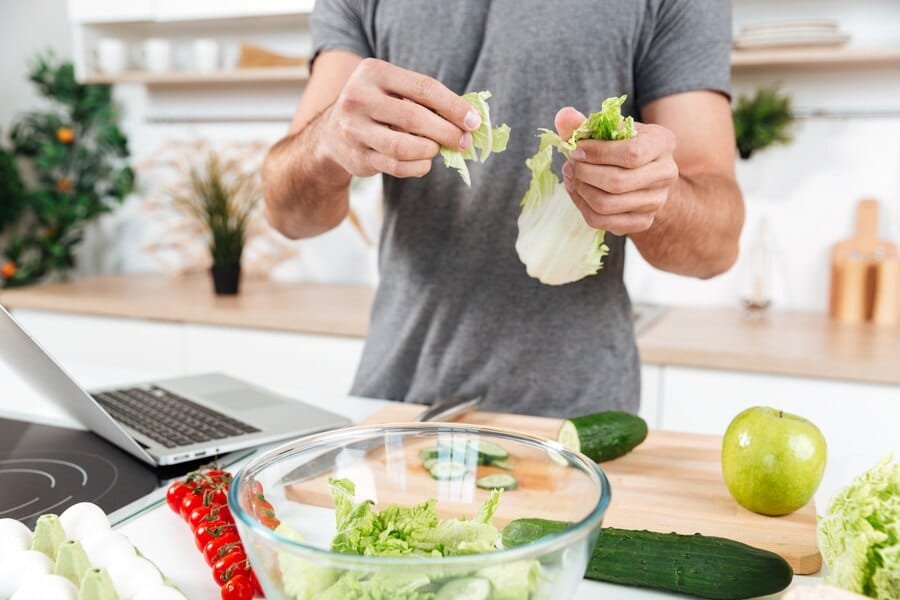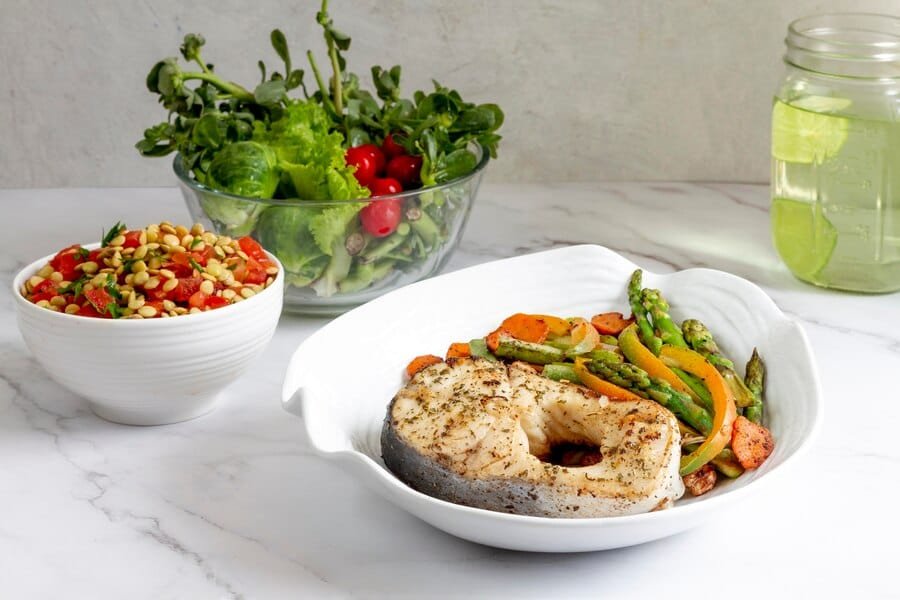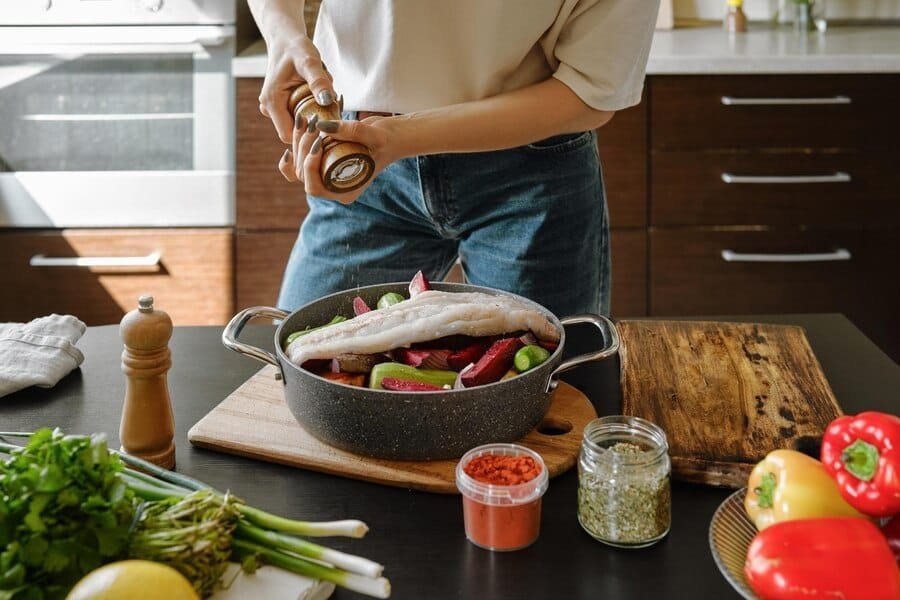
Meal preparation has become an essential strategy for maintaining a healthy lifestyle while managing our increasingly busy schedules. As we dive into the art of meal prepping, we’ll explore efficient recipes, smart planning techniques, and time-saving strategies that will transform your weekly food routine. The beauty of meal prep lies not just in its practicality, but in how it can significantly reduce stress, save money, and help you maintain consistent healthy eating habits throughout the week.
Read Also:
- Delightful No-Bake Desserts: Simple Recipes for Sweet Treats Without Turning On the Oven
- The Ultimate Guide to Crafting Perfect Flaky Pie Crusts: A Baker’s Secret Recipe and Techniques (2024)
- Quick and Easy Cake Recipes for Birthdays: A Complete Guide
- Discovering the Art of Asian Vegetable Stir-Fry: A Culinary Journey
Understanding the Foundations of Successful Meal Prep
Before diving into specific recipes, it’s crucial to understand the fundamental principles that make meal prep successful. According to research published in the American Journal of Preventive Medicine, people who regularly prepare meals at home consume fewer calories and maintain better dietary quality than those who cook less frequently. The key to successful meal prep isn’t just about cooking in bulk – it’s about strategic planning that aligns with your lifestyle, dietary needs, and schedule. The Academy of Nutrition and Dietetics emphasizes that meal prep can be particularly beneficial for weight management and maintaining consistent nutrition throughout the week.
Essential Equipment and Kitchen Setup
Setting yourself up for success begins with having the right tools at your disposal. While you don’t need a professional kitchen, certain equipment can make your meal prep journey significantly more efficient. According to recommendations from America’s Test Kitchen, essential items include:
- High-quality food storage containers with secure lids
- A reliable set of sharp knives
- Large sheet pans for roasting vegetables
- A good-sized cutting board
- Multiple mixing bowls
- A food scale for portion control
Planning Your Week: The Strategic Approach
The most successful meal preppers start with a solid plan. The Mayo Clinic suggests beginning each week by creating a detailed shopping list and menu plan. This approach not only ensures you have all necessary ingredients but also helps minimize food waste. Consider your schedule for the upcoming week – which days will be busiest? Which meals need to be portable? Understanding these factors will help you plan more effectively.
Breakfast Prep: Quick and Nutritious Options
Starting your day with a nutritious breakfast becomes effortless with proper preparation. According to Harvard School of Public Health, a balanced breakfast should include protein, complex carbohydrates, and healthy fats. Here’s a versatile overnight oats recipe that can be prepared in bulk:
Base Recipe for Make-Ahead Overnight Oats (5 servings)
- 2½ cups old-fashioned oats
- 3 cups milk (dairy or plant-based)
- 2½ tablespoons chia seeds
- 2½ tablespoons honey or maple syrup
- Pinch of salt
Mix ingredients in a large bowl, divide into five containers, and refrigerate overnight. In the morning, top with fresh fruits, nuts, or seeds.
Lunch Solutions: Portable and Satisfying
Creating lunch options that remain fresh and appetizing throughout the week requires strategic planning. The Food Network recommends focusing on recipes that can be partially assembled in advance but finished just before eating. A popular approach is the “components method,” where you prepare various elements that can be mixed and matched throughout the week.
Mediterranean Grain Bowl Components (5 servings)
- 2½ cups quinoa or brown rice, cooked
- 3 cups roasted vegetables (sweet potatoes, bell peppers, zucchini)
- 2 cans chickpeas, rinsed and seasoned
- Fresh greens (pack separately)
- Homemade lemon tahini dressing
Dinner Strategies: Family-Friendly Options
Dinner prep can be the most challenging aspect of meal planning, especially when cooking for a family. The Cooking Light approach suggests focusing on versatile protein preparations that can be repurposed throughout the week. Here’s a strategic approach to preparing multiple dinners efficiently:
Sunday Prep Session (yields 4-5 dinners)
- Roast 2-3 pounds of chicken breasts
- Prepare a large batch of roasted vegetables
- Cook a pot of brown rice or quinoa
- Make a versatile sauce that can be used multiple ways
These components can be combined differently each night to create varied meals:
- Monday: Chicken and vegetable stir-fry over rice
- Tuesday: Grain bowls with chicken and roasted vegetables
- Wednesday: Chicken and vegetable soup (using pre-cooked components)
- Thursday: Chicken and vegetable wraps
- Friday: Mixed grain salad with remaining components
Smart Storage Solutions and Food Safety
The USDA Food Safety and Inspection Service provides crucial guidelines for food storage and safety. Properly storing your prepped meals is essential for both safety and maintaining quality. Glass containers are recommended by Environmental Working Group as the safest option for food storage, especially when reheating meals.
General storage guidelines:
- Cooked proteins: 3-4 days in the refrigerator
- Cooked grains: 3-4 days in the refrigerator
- Cut vegetables: 4-5 days in the refrigerator
- Prepared salads (without dressing): 3-4 days in the refrigerator
Time-Saving Tips and Batch Cooking Strategies
Professional chefs and home cooking experts at Serious Eats recommend several strategies to maximize efficiency during meal prep:
- Practice mise en place (preparing and organizing ingredients before cooking)
- Use multiple cooking methods simultaneously (oven, stovetop, slow cooker)
- Clean as you go to maintain an organized workspace
- Invest in time-saving tools like a food processor or instant pot
Budget-Friendly Approaches to Meal Prep
The USDA’s Economic Research Service has found that meal prepping can significantly reduce food expenses. To maximize cost-effectiveness:
- Buy seasonal produce
- Purchase proteins in bulk when on sale
- Utilize frozen vegetables for cost-effective nutrition
- Shop at wholesale clubs for frequently used items
- Plan meals around sale items
Sustainability and Reducing Food Waste
The Environmental Protection Agency emphasizes the importance of reducing food waste through proper planning and storage. Meal prepping naturally supports this goal by:
- Encouraging planned purchasing
- Utilizing ingredients efficiently
- Properly storing prepared foods
- Incorporating leftovers into new meals
Advanced Meal Prep Techniques and Recipe Variations
As you become more comfortable with basic meal prep, you can explore advanced techniques recommended by professional chefs at The Culinary Institute of America:
- Flavor layering through different seasoning combinations
- Advanced knife skills for faster preparation
- Multiple cooking methods for varied textures
- Sauce making and preservation techniques
Maintaining Variety and Preventing Meal Fatigue
One common challenge in meal prepping is maintaining enough variety to prevent boredom. Registered dietitians at Cleveland Clinic suggest:
- Rotating protein sources weekly
- Experimenting with international cuisines
- Using different cooking methods
- Incorporating seasonal ingredients
- Creating fusion dishes that combine familiar elements in new ways
Conclusion: Making Meal Prep a Sustainable Habit
Successful meal prep is about finding a system that works for your lifestyle and preferences. The Centers for Disease Control and Prevention notes that establishing healthy eating habits through practices like meal prep can significantly impact long-term health outcomes. Start small, be consistent, and gradually build your meal prep routine into a sustainable practice that serves your health and lifestyle goals.
By implementing these strategies and recipes, you’ll be well-equipped to tackle weekly meal preparation efficiently and effectively. Remember that the goal isn’t perfection but progress – start with what feels manageable and gradually expand your meal prep repertoire as you become more comfortable with the process.


